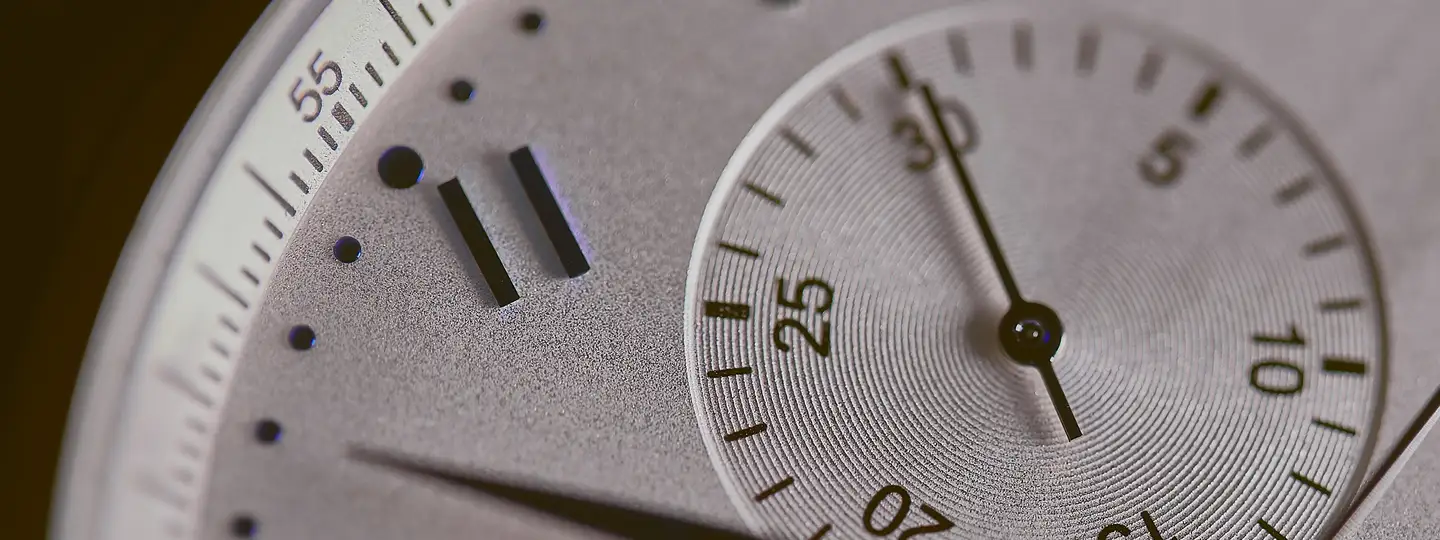Have you ever felt overwhelmed by job duties or struggled to start something new?
The 10-minute rule might just be your new best friend.
In this article, we're looking into how dedicating just 10 minutes to anything can transform the way you work and live.
It's not just about managing time - it's about making it work for you.
Let's see how this simple rule can bring about big changes, as well as make your days more productive.
What is the 10 minute rule?
The basic idea behind the 10-minute rule is pretty straightforward. It's about breaking down any job or challenge into small, manageable chunks of just 10 minutes. Think of it like this: instead of looking at a big, daunting piece of work and feeling overwhelmed, you focus on just giving it a few minutes of your effort.
Here's how it works.
Let's say you have a report to write, and it feels like a huge challenge. With the 10-minute rule, you set a timer and just start working on the report. You don't worry about finishing it or how much you need to do. You just focus on doing what you can in those 10 minutes.
The cool part is, often, once you start and the set minutes are up, you'll find that you're in the flow of things and want to keep going.
But even if you don't, you've made some progress, which is great. And you can always come back later and do another 10-minute chunk.
This technique is effective because it helps you overcome that initial resistance or procrastination.
It's a bit like the Pomodoro technique, where you work in short bursts, or the Eisenhower Matrix, which helps you prioritize responsibilities. But the 10-minute rule is even simpler - just set a timer and go for it.
The history of the ten minute rule

The Ten Minute Rule started in the UK House of Commons as a unique way for MPs to propose new laws.
Formally known as Standing Order No. 23, it's a parliamentary procedure in the UK House of Commons.
It lets MPs, typically backbenchers, make their case for a new bill in a speech lasting up to ten minutes. After this, another MP may speak against it for the same duration. The House then decides if the bill should advance for a second reading.
Now, this idea is used widely in time management, both in personal lives and at work. It's a simple yet effective way to manage time.
How does the 10 minute rule help?
This particular time management technique can really help in three ways:
A higher feeling of accomplishment
Completing your duties in small, 10-minute segments can lead to a series of small victories.
Each time you finish a 10-minute session, you feel a sense of achievement. This is not just about ticking boxes - it's about creating a series of successful moments that build up your confidence and drive.
Work consistency
Regularly working in short bursts helps maintain a steady flow of productivity. It's easier to dedicate yourself to 10 minutes of focused work rather than hours at a stretch. This consistency is key to making progress, especially with larger, more daunting tasks.
Easy way to break down larger goals into smaller chunks
Large goals can be overwhelming, but this method helps break them down into smaller tasks.
This approach makes it easier to start, reduces procrastination, and provides a clear path forward. Thanks to tackling a big project in these small increments, you gradually chip away at it. After that, the goal seems less intimidating and more achievable.
Why you should try the 10-minute rule with your every task

This rule is worth giving it a shot for three main reasons.
Focus on the output and not the outcome
When you use the 10-minute practice, you shift your attention to what you're doing at the moment (the output) rather than the final result (the outcome). This can reduce pressure and make duties feel more manageable.
Create new habits
Deciding to do a 10-minute task is a small, doable commitment. It's a great way to start forming new, productive habits. Once you start, it's easier to keep the momentum going.
It is harder to start than to keep going
The hardest part of any job is often just starting. The rule of ten minutes helps you overcome this barrier. When committing to just a short period, you're more likely to start.
And once you're in motion, it's easier to continue. This approach is especially useful to overcome procrastination, as it breaks down the mental barrier of dedicating yourself to a long task.
Examples of the 10-minute rule
"Where could I apply it?" - you might be wondering.
The thing is - anywhere, really.
Here are some specific examples to inspire you:
Cleaning your room
Instead of tackling the whole room, set a timer for 10 minutes and start with one corner. This helps you stay present and concentrated, reducing the urge to procrastinate.
Writing a report
When facing a big writing task, e.g. a social media report, sit down to write for just 10 minutes. This can provide insight into the topic and make the task less overwhelming.
Exercise
Commit to a 10-minute workout. It's a nice way to build a fitness habit without feeling overwhelmed. You don’t even have to go to the gym!
Reading
Set aside a timer for reading a book. This can help build a regular reading habit, making it easier to fit into a busy schedule.
How to get started?
To get started with the 10-minute method, Unrubble can help. It's an automatic time tracking software that's easy to use on any device.
With Unrubble, you can track your 10-minute tasks effortlessly. It uses advanced technology like face recognition and AI to make sure you're focused on the task at hand.
Plus, it's super user-friendly and perfect for both personal and professional use.
Start with Unrubble for free and see how it can help you stick to the 10-minute method and make the most of your time!

The perfect rule to beat procrastination today
This a fantastic way to make big tasks feel more manageable and to keep yourself moving forward, little by little.
Plus, this rule can be used for almost anything, from cleaning your house to learning a new skill. Give it a try – you might be surprised at how much you can achieve in just 10 minutes,
Get started now - stop procrastinating.
And don't forget to give Unrubble a try.
FAQ
How does the 10-minute rule work?
The 10-minute rule for overcoming procrastination involves committing to work on a task for just 10 minutes, with the idea that once started, one is likely to continue beyond that time.
What is the 10-minute rule for distraction?
The 10-minute rule for distraction is a time management strategy where you focus fully on a task for 10 minutes before allowing a brief break or distraction, enhancing productivity by maintaining full focus in short bursts.
What does the 10-minute rule instruct us to do?
The 10-minute rule instructs us to start working immediately on a task ahead, even if for only 10 minutes. This method helps in beating procrastination by breaking down large projects into more manageable tasks.
What is the 2-minute productivity rule?
The 2-minute productivity rule, one of the productivity hacks, suggests that if a task can be done in two minutes or less, it should be done immediately to keep the to-do list clear and boost productivity.
What is the 15 10-minute rule?
The 15 10-minute rule is a guideline suggesting that for every 15 minutes spent on a task, spend 10 minutes focusing intently and the remaining time reviewing or planning the next steps, effectively enhancing productivity.
What is the 5-minute focus rule?
The 5-minute focus rule is a productivity technique where you devote full attention to an easy task for five minutes, which often kickstarts momentum and helps in overcoming procrastination for more complex tasks ahead.





